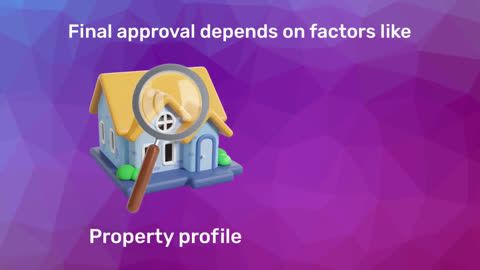What is ROC?
Return on Capital (ROC) is a key financial metric used to measure the profitability and efficiency of a bank in relation to the capital it invests. In banking, ROC evaluates how well a bank generates profits from its capital base, which includes funds from shareholders and debt financing. This ratio helps stakeholders understand whether the bank is using its resources efficiently to produce earnings.The ROC meaning in banking is particularly important because banks are highly capital-intensive. Banks must ensure that the return they generate on their capital justifies their investments in assets like loans, securities, and other financial instruments. Essentially, it allows banks to assess their financial health and make informed decisions about expanding operations, offering loans, or investing in new projects.
Understanding ROC in banking becomes crucial when considering large financial commitments like a home loan. By knowing how a bank performs in terms of return on capital, customers can gauge its stability and reliability. A higher ROC can indicate that the bank manages its resources well, meaning better interest rates or more favourable home loan terms for borrowers.
Why is Return on Capital (ROC) important in banking?
Return on Capital (ROC) is crucial in the banking sector because it measures how well a bank can generate returns from its capital. Banks have significant capital at their disposal, and effective use of this capital is essential to maintaining profitability and stability. High ROC indicates that a bank is successfully using its capital to grow its assets, issue loans, and invest in profitable ventures, all of which contribute to its overall financial strength.In banking, ROC helps stakeholders, including investors and regulators, assess the bank’s performance. A high ROC suggests efficient capital management, which can result in better loan terms and interest rates for customers. For instance, if a bank manages to maintain a strong ROC, it can offer more competitive home loan rates, benefiting potential homeowners.
Moreover, the ROC meaning in banking serves as a benchmark for comparing the financial health of different banks. It is also useful for evaluating the bank’s long-term sustainability. As banks rely heavily on capital for daily operations, ensuring a high ROC is key to ensuring that they can continue to offer a range of services, including home loans, at competitive terms.
How does Return on Capital (ROC) affect my home loan?
The ROC in banking can have a significant impact on your home loan. A bank’s Return on Capital helps determine how efficiently it is using its resources to generate profits, which in turn affects the interest rates and loan products offered to customers. Banks with a higher ROC are likely to be in a better financial position, allowing them to offer more competitive home loan rates and flexible terms.For home loan seekers, understanding a bank's ROC is crucial. If a bank has a strong ROC, it typically indicates efficient capital management, which could translate to better loan approval chances, lower interest rates, or other favourable terms. Conversely, a lower ROC might suggest that the bank is not optimising its capital effectively, potentially leading to higher interest rates on loans.
So, if you're in the market for a home loan, checking a bank's ROC can give you an idea of its financial strength and reliability. Banks with a strong ROC are generally more likely to offer better deals on home loans, making your borrowing experience smoother and more cost-effective in the long run.
How is ROC different from other financial metrics?
While Return on Capital (ROC) is a vital metric in banking, it differs from other financial ratios such as Return on Assets (ROA) and Return on Equity (ROE). These metrics are used together to assess a bank's financial health, each focusing on different aspects:| Metric | Focus | Comparison |
| ROC | Measures profitability based on both equity and debt. | Provides a holistic view of capital efficiency. |
| ROA | Measures how efficiently a bank uses its total assets to generate profits. | Includes all assets, not just capital. |
| ROE | Measures the return on shareholders' equity, excluding debt. | Focuses solely on equity, not the entire capital base. |
While ROA and ROE are important, ROC offers a broader perspective on how well a bank manages its entire capital base, providing valuable insights for home loan seekers about the bank’s resource management and potential loan offers.
What role does Return on Capital play in financial decision-making?
Return on Capital (ROC) plays a pivotal role in financial decision-making for banks. High ROC indicates that a bank is using its capital efficiently to generate profits, which influences decisions on lending rates, investment strategies, and product offerings. Banks with strong ROC are more likely to take calculated risks, offer competitive home loan rates, and invest in growth opportunities.For customers, the ROC in banking is an important indicator of a bank’s financial health. A bank with a strong ROC can offer better financial products, such as lower interest rates on home loans, making borrowing more affordable. Additionally, investors use ROC to assess whether a bank is a good investment opportunity. High ROC signifies that the bank is making the most out of its capital, which is a positive sign for shareholders and customers alike.
In conclusion, ROC is not just a metric for evaluating a bank’s performance; it also impacts its lending practices and product development, which directly affects customers applying for home loans and other financial services.
Explore Bajaj Housing Finance Home Loan
If you are considering a home loan, Bajaj Housing Finance Home Loan could be your answer. With competitive interest rates and options like part-prepayment, balance transfer, and top-up loans, Bajaj Housing Finance ensures that you can manage your principal value effectively, keeping your financial commitments within control.Here are the benefits of choosing Bajaj Housing Finance Home Loan
1. Attractive interest rates: Enjoy competitive interest rates, making home ownership more affordable.
2. Long repayment tenure: You can choose a repayment tenure that suits your financial situation, ensuring that managing your home loan is hassle-free.
3. Quick disbursal: Experience a swift and hassle-free loan application and disbursal process, helping you move into your dream home faster.
4. Minimal documentation: Our streamlined documentation process makes applying for a home loan easy and convenient.
Bajaj Housing Finance makes financing your dream home simpler. Apply today and enjoy a hassle-free home loan experience designed to meet your needs.




